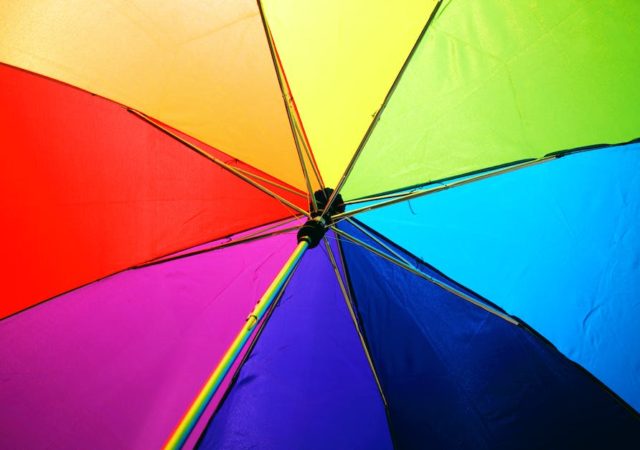Introduction
The LGBTQIA community is a broad spectrum that has gained increasing visibility in recent years. The letters in the acronym represent a wide range of identities, all of which play a vital role in the advancement and recognition of queer issues. While it’s essential to understand each letter, breaking down the complexities of the LGBTQIA spectrum can be challenging, particularly for those who are not part of the community. This article is aimed at those who want to understand and learn the basics of the letters in LGBTQIA and their inherent characteristics.
Explanation of the LGBTQIA Spectrum
LGBTQIA is an acronym that stands for Lesbian, Gay, Bisexual, Transgender, Queer, Intersex, and Asexual. Initially, the acronym started with LGBT, but it has expanded over the years to embrace a more inclusive range of gender and sexual orientations. As a spectrum, it recognizes that gender and sexuality are fluid and can’t be defined by strict categories. Each letter represents unique experiences and identities that make up the broader queer community.
Importance of Understanding the Letters
Understanding the letters in the LGBTQIA spectrum is essential, primarily because it helps break down and smash harmful stereotypes and misconceptions surrounding gender and sexuality. Educating oneself about queer issues is also an act of allyship, indicating a willingness to learn and respect different perspectives. It also promotes the visibility of marginalized groups, reduces stigma and discrimination, and creates a more accepting and supportive community.
Overview of the article
The article aims to provide an overview of the LGBTQIA spectrum, its history, and each letter’s meaning and attributes. It will also explore the intersectionality of LGBTQIA, particularly the impact of race, ethnicity, culture, socioeconomic status, religion, and spirituality on queer identities and experiences.
The Basics of LGBTQIA
Definition of Terms
Lesbian refers to women who are attracted to other women; gay refers to men who are attracted to other men. Bisexual refers to individuals who are attracted to both sexes, while transgender refers to individuals whose gender identity differs from the sex assigned at birth. Queer represents a broad range of sexual orientations and gender identities outside of traditional norms. Intersex refers to individuals with ambiguous genitalia or abnormal reproductive anatomy, while asexual refers to individuals who have little or no sexual attraction.
History of the Community
The queer community has a long and complex history that has been marked by marginalization and oppression. The Stonewall Riots in 1969 in New York City are widely regarded as the catalyst for the modern LGBTQIA rights movement. Since then, the community has made significant strides towards equality, although discrimination still persists in many parts of the world.
Current State of Acceptance and Rights
The current state of acceptance and rights varies depending on where you are in the world. While some countries have legalized same-sex marriage and implemented anti-discrimination laws, others still criminalize homosexuality and punish LGBTQIA individuals. Even in places where same-sex marriage is legal, there are still significant hurdles to overcome, such as social stigma and lack of workplace protections.
Understanding Each Letter
Lesbian – definition and attributes
A lesbian is a woman who is romantically and sexually attracted to other women. They often face unique challenges, such as social stigma and the invisibility that can come with not conforming to traditional gender norms. Lesbians often form close-knit and supportive communities, and many have made significant contributions to the arts, politics, and social justice movements.
Gay – definition and attributes
Gay is an umbrella term used to describe men who are romantically and/or sexually attracted to other men. Gay men are often subject to negative stereotypes, including being seen as effeminate or promiscuous. However, many gay men have made significant contributions to society, and the visibility of gay men in popular culture has increased in recent years.
Bisexual – definition and attributes
Bisexual individuals are attracted to both men and women, and sometimes people outside of the traditional gender binary. They often face harmful stereotypes, such as being seen as promiscuous or being “confused” about their sexuality. However, many bisexual individuals have made significant contributions to the queer community and society as a whole.
Transgender – definition and attributes
Transgender individuals are those whose gender identity differs from the sex assigned to them at birth. They often face significant challenges, including discrimination in the workplace, healthcare, and education. Many transgender individuals experience gender dysphoria, discomfort or distress that comes with their assigned gender. However, many have been leaders in the LGBTQIA rights movement and have had a significant impact on popular culture.
Queer – definition and attributes
Queer is an umbrella term used to describe a broad range of non-traditional gender and sexual identities. It is often adopted as a term of self-identification by those who do not feel comfortable with the labels of lesbian, gay, bisexual, or transgender. Because it is a repurposed term, it can be seen by some as negative or hurtful, but many in the community have embraced it as a way to reclaim their experiences and identities.
Intersex – definition and attributes
Intersex individuals have ambiguous genitalia or abnormal reproductive anatomy that does not fit neatly into male or female categories. They often face harmful stigma and have been subject to harmful medical procedures, such as surgery to remove or alter genitalia at a young age. Many intersex individuals have become leaders within the LGBTQIA movement and have advocated for greater visibility and inclusion.
Asexual – definition and attributes
Asexual individuals experience little or no sexual attraction to others. They face harmful stereotypes, such as being seen as prudish or having a medical condition. However, many asexual individuals have made significant contributions to the queer community and society.
The Intersectionality of LGBTQIA
The Effect of Race, Ethnicity, and Culture
The intersection of race, ethnicity, and culture can significantly impact queer individuals’ experiences. LGBTQIA individuals of color often face compounding challenges, such as racism, homophobia, and transphobia. Culturally specific attitudes towards gender and sexuality can also affect queer individuals who come from communities that prioritize traditional gender roles and heterosexuality.
The Influence of Religion and Spirituality
Religion and spirituality can also complicate queer identities. Many religious communities are hostile towards queer individuals, leading to significant conflicts with families and the wider community. However, there are also religious groups that are supportive of queer individuals, and some believe that embracing their sexuality and gender identity is integral to their faith.
The Impact of Socioeconomic Status
Socioeconomic status can impact queer individuals in significant ways, particularly in terms of access to healthcare, housing, and education. Queer individuals are often subject to discrimination in these areas, leading to significant disparities in health and well-being. Those living in poverty or experiencing homelessness are particularly vulnerable to violence and harassment.
Conclusion
Recap of Main Points
The article aimed to educate about the LGBTQIA spectrum, the history of the community, and the meaning and attributes of each letter. The intersectionality of LGBTQIA was explored through the impact of race, ethnicity, culture, religion, spirituality, and socioeconomic status on queer identities and experiences.
Emphasis on the Importance of Inclusion and Respect
It is essential to create and promote an accepting, inclusive, and respectful environment for all individuals, regardless of their gender or sexual orientation. This can be achieved through education and advocacy, open communication and discussion, and the promotion of policies that protect the rights and well-being of all members of society.
Final Thoughts and Call to Action
In conclusion, understanding the LGBTQIA spectrum is crucial, and it is essential to support and advocate for the equality and acceptance of all individuals, regardless of their background or identity. Through increased awareness and action, we can create a world that is more inclusive, respectful, and accepting of everyone.





